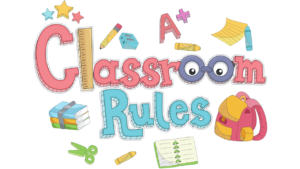Teaching children about shapes and their positions is a foundational concept in early education. Here’s a guide on how to introduce shapes and their positions to kids:
**1. Basic Shapes:
- Begin by introducing basic shapes such as circles, squares, triangles, rectangles, and ovals. Use visual aids like flashcards, posters, or drawings.
**2. Interactive Games:
- Engage children in interactive games to identify and name shapes. For example, you can play “I Spy” with shapes in the environment or use shape sorting toys.
**3. Shapes in Daily Life:
- Point out shapes in everyday objects. Ask children to identify shapes in their surroundings, such as square windows, circular wheels, or triangular signs.
**4. Positional Words:
- Introduce positional words such as:
- Above
- Below
- Beside
- In front of
- Behind
- On
- Under
- Inside
- Outside
**5. Shape Hunt:
- Organize a “shape hunt” activity where children search for specific shapes in the room or outdoor environment.
**6. Crafts and Art Activities:
- Incorporate shapes into arts and crafts activities. For example, use cut-out shapes to create a collage or arrange shapes to make pictures.
**7. Storytelling:
- Tell stories that involve shapes and their positions. For instance, you can have a story about a circle rolling beside a square.
**8. Building Blocks:
- Use building blocks or construction toys to create structures with different shapes. Talk about the position of each shape as they build.
**9. Body Movements:
- Use body movements to demonstrate positional words. For instance, have children stand in front of a shape, beside a shape, or on a shape drawn on the floor.
**10. Printable Worksheets: – Utilize printable worksheets that involve coloring, tracing, and matching shapes with their correct positions.
**11. Interactive Apps and Games: – Introduce educational apps or online games that focus on shapes and positions. Many interactive resources make learning fun for kids.
**12. Group Activities: – Plan group activities where children work together to create shapes using their bodies or objects. This enhances social interaction while reinforcing shape concepts.
**13. Outdoor Learning: – Take the learning outdoors. Draw shapes on the pavement and ask children to stand in certain positions relative to those shapes.
**14. Use Puzzles: – Introduce puzzles with shapes and their corresponding positions. This helps develop problem-solving skills along with shape recognition.
**15. Reinforce with Songs: – Incorporate songs or rhymes that involve shapes and positions. Musical elements can make learning more enjoyable for kids.
Remember to make the learning experience hands-on and enjoyable for children. Use a variety of activities to cater to different learning styles, and gradually progress from basic shapes to more complex concepts of shapes in different positions.




